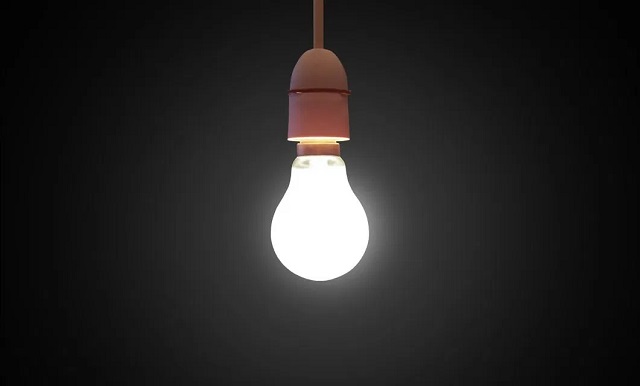
Government has the capacity to mobilise equipment and manpower and respond quickly to emergencies
COMMENT | HARRISON E. MUTIKANGA | The recent locust invasion, the ongoing COVID-19 pandemic, extreme hydrological events with increased precipitation and rising Lake Victoria water levels, degraded lake catchment, and the subsequent potential threats to dam safety and hydropower generation have highlighted the urgent need for Government Ministries and Agencies to develop and operationalise Emergency Preparedness and/or Action Plans to quickly respond to and mitigate the possible consequences of extreme events such as flooding, earthquakes, and terrorist attacks.
On the morning of Tuesday, April 14, a floating island as a result of the rising Lake Victoria water levels, found its way to the Nalubaale Hydropower Plant at Jinja. The incident caused electricity generation disruption as the water intake screens were clogged with debris from the floating island cutting off flow to the turbines and the cooling water system of the power plant. By half-past midday, the situation had deteriorated and the generation units at Nalubaale-Kiira hydropower plant complex tripped, triggering a national blackout.
On the same day, the President was scheduled to address the nation on the status of COVID-19 and the lockdown. With electricity being a driver of the Nation’s services including the media houses, the pressure was building on the Electricity Agencies to restore electricity supply. Through concerted effort and good coordination of engineers from the system operator and the generation companies, power was restored after about one hour and to our relief the President’s address to the nation went on smoothly.
Meanwhile, Cabinet constituted a National Task Force Team headed by the Minister of Works and Transport and consisting of Government Ministries and Agencies. Heavy equipment was quickly mobilised and deployed at Jinja, and work on harvesting and clearing the floating island commenced. By the end of the fifth day, the floating island at the dam had been cleared. Usually, this would have taken more than two weeks to complete.
On Sunday, April 10, the President visited the Nalubaale dam and the Jinja pier to assess the progress of clearing the floating island at the dam, the spilling of water to control rising water levels, and the efforts being made to control more floating islands at the pier. The President’s visit was not only a good gesture of exemplary leadership but a big motivating factor to the teams working at the different fronts.
On the morning of Saturday, May 9, the Nation again experienced yet another National blackout but this time not as a result of raising lake water levels and floating island but from de-coupling of the Ugandan power system from the Kenyan system. This revealed the vulnerability of Uganda’s power system to external events and operational preparedness weaknesses in the sector to timely restore electricity supply.
The major lessons learned during the blackouts include the following:
- When confronted with disasters, the Government has the capacity to mobilize resources (equipment and manpower) and respond quickly to emergencies.
- Power system stability associated with frequency and voltage fluctuations is of great concern. In order to ensure energy security and reliability of supply, there is need for an Independent Panel of Experts to evaluate and assess the capability of the power transmission system to withstand system fluctuations and recommend improvement measures to the government.
- The hydraulic structures of hydropower plants are exposed to serious dam safety and revenue generation loss without a robust log boom in place to contain not only floating debris but the emerging threat of floating islands. The need to redesign and install log booms and/or waterway barriers at Jinja dam cannot be overemphasised.
- There is need for adaptation measures to the inter-annual variation of precipitation patterns and lake levels as a result of climate change. These measures must be informed by studies of the future climate change impacts on the Lake Victoria basin and hydropower generation. The current lake levels of over 13.4 metres were last experienced in 1964 indicating a return period of 56 years. Therefore, the studies should probably cover historical and future projections for 150 years from 1950 to 2100 to minimise inherent model uncertainties.
- The Nalubaale-Kiira complex is a strategic asset for Government not only for hydropower generation but flood control. Since 1951, the Lake Victoria outflow has been regulated by the Agreed Curve; a rating curve relating lake level and outflow in natural conditions. The current extreme hydrological events and the commissioning of Kiira hydropower station in 2000, warrants deviation from the Agreed Curve by spilling more water. The current unprecedented water spilling of 2,400 cumecs is twice the design capacity of 1,272 cumecs for Nalubaale sluice gates and 3 times the allowable discharge of 800 cumecs under normal conditions. These high water releases have led to erosion of the river banks along the cascade of hydropower plants and increased the tailwater level at Nalubaale raising dam safety concerns. There is need to investigate whether these conditions are within current dam design criteria and the implications on downstream activities.
- There is need to regulate the Lake Victoria outflow and efficiently utilise water resources to mitigate against seasonal changes. Reducing water spillage and increasing power generation, requires either construction of a new dam at Jinja or increasing the water spilling capacity of the existing hydropower dams by redesigning and renewal of the aging dams. Uganda Electricity Generation Company Limited (UEGCL) initiatives in this regard need to be fully supported by Government.
- There is urgent need to build on the recently created Uganda Commission on Large Dams (UCOLD) initiatives and strengthen the Nation’s Dam Safety Regulatory framework.
Finally, going forward, the task ahead is challenging and will require skills of engineers and scientists to build computationally demanding hydrological and optimisation simulation models as a means to overcome these adverse effects and indeed Mr. President, we can’t agree more with you that engineers and scientists deserve more pay.
****
Dr. Eng. Harrison E. Mutikanga is the Chief Executive Officer Uganda Electricity Generation Company Limited (UEGCL).
CLICK TO READ ONLINE MAGAZINE HERE
 The Independent Uganda: You get the Truth we Pay the Price
The Independent Uganda: You get the Truth we Pay the Price



